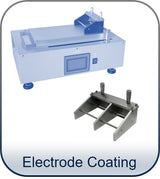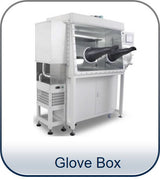Coin Cell Lab Line Equipment For Battery R&D

























Lithium-ion batteries (LIBs) are commonly used in small electronics (smartphones, tablets, drones) and electric vehicles due to their outstanding energy storage capability. The most common three LIB forms are coin cell, pouch cell and cylinder cell. Coin cell (button cell) battery is a small single-cell LIB shaped as a squat cylinder typically 5 to 25 mm (0.197 to 0.984 in) in diameter and 1 to 6 mm (0.039 to 0.236 in) high. Coin cell research is mainly utilized for materials research work including new materials performance testing and battery material quality inspection in a quick and low-cost way.
MSE Supplies provides complete various LIB production lines including equipment and materials as well as customized service. Please contact us for more details.
Coin Cell Assembly Procedure
- Electrode/Slurry Preparation
- Cathode: 96% Active material + 2% PVDF binder + 2% Carbon black
Solvent: NMP
The PVDF powder should be baked at 80℃ for 8 hours. - Anode: 96% Active material + 2% CMC/SBR binder + 2% Carbon black
Solvent: De-ionized water (Conductivity ≤1µs/cm) - Electrode coating and pressing
- Electrode cutting and drying
- Coin cell assembly and crimping
- Battery Testing
The electrode of lithium-ion battery (LIB) is composed of active materials, conductive agent, battery binder and dispersant follow by the feeding sequence: active material, conductive agent and binder feeding time, feeding ratio require strict process. The mixing process (rotation speed, vacuum, temperature, humidity, etc.) and final slurry properties (viscosity, particle size, solid content, etc.) should strictly follow the procedure according to the materials. Furthermore, the slurry needs to be filtered to remove large particles, precipitation, ferromagnetism and other substances. Here are recommended electrode formulations:
Electrode slurry casting is the cathode slurry extrusion coating with a doctor blade, a notched bar or a film coater or spraying on the collector metal foil (aluminum or copper). The coated foil is baked at specific temperature, time and environment. The baking temperature of NMP needs to be at 80-100℃ for over 6 hours. Afterwards, roller machines can be used for tablet pressing to increase the electrode density and reduce the porosity for better electrode stability and electrochemical properties. Otherwise, the coated materials easily fall off the substrate in the following testing process.
Use the disc cutting to punch the electrodes out of large strips. To minimize edge defects, sandwich your strip between two weight papers. The diameter of the electrode can be designed and adjusted according to punching die (Usually diameter size: working electrode<counter electrode<separator). Select cutting electrodes with no burr, no powder dropping, and smooth edge. Put electrode disks into a vacuum drying oven to further remove the moisture in the electrode. Recommended drying condition: 120℃ for 6 hours and vacuum to 0.1MPa.
Transfer the prepared electrodes to an inert atmosphere glove box and prepare the coin cell assembly components: anode case, lithium metal plate, battery separator, gasket, spring plate (nickel foam), cathode case, electrolyte, in addition to the crimper, pipette and insulating tweezers. Place the anode side of the coin cell up on the coin cell crimper. Paper towels can be used to absorb the spilled electrolyte and take it out with insulating tweezers.
Test the performance of assembled battery cells using battery analyzers provided by MSE Supplies.
Refenrences
- "A guide to full coin cell making for academic researchers." Journal of The Electrochemical Society 166.2 (2019): A329-A333.
- "Critical parameters for evaluating coin cells and pouch cells of rechargeable Li-metal batteries." Joule 3.4 (2019): 1094-1105.
- "Reproducibility of Li-ion cell reassembling processes and their influence on coin cell aging." Journal of Energy Storage 24 (2019): 100732.
